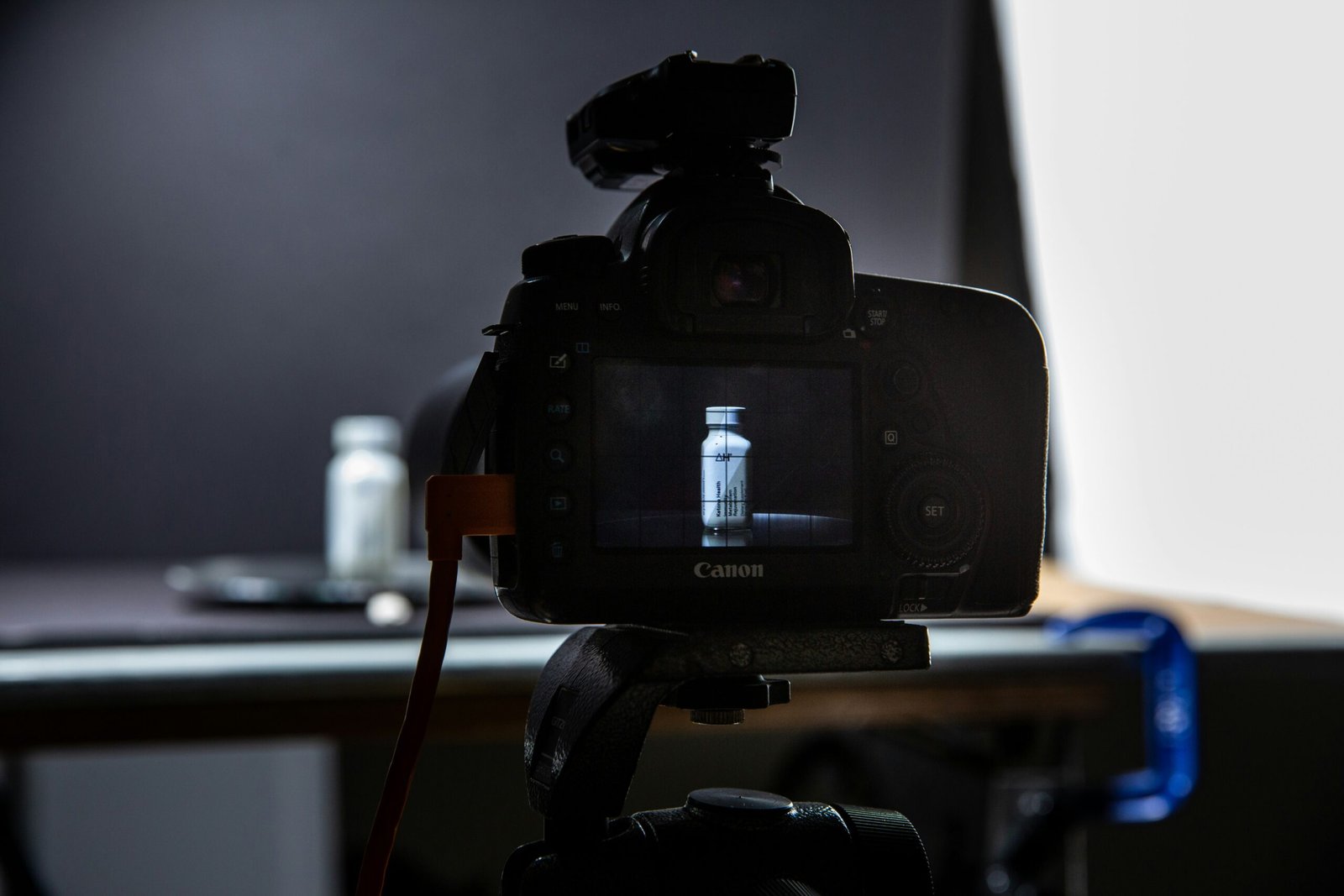Understanding Circadian Rhythm
Circadian rhythm refers to the intrinsic biological clock that governs an array of physiological processes over a roughly 24-hour cycle. This phenomenon is deeply rooted in the natural world, influencing behavior and biological activities in organisms ranging from humans to plants. Circadian rhythms are regulated by a centralized system in the brain, primarily encompassing the suprachiasmatic nucleus (SCN), which receives direct input from light stimuli. This internal clock not only orchestrates sleep-wake cycles but also plays a critical role in regulating hormone release, eating habits, and even body temperature.
The significance of circadian rhythm cannot be overstated, as it fundamentally drives our daily experiences and overall health. Hormones such as melatonin, which facilitates sleep, are produced in response to darkness and help signal night-time, promoting restorative sleep. Conversely, cortisol levels peak in the morning, enhancing wakefulness and alertness. This synchronization with natural light and dark cycles promotes optimal functioning and contributes to physical well-being.
Environmental factors, particularly light exposure, significantly influence circadian rhythm. During daylight, exposure to blue light, which is prevalent in sunlight and artificial light sources such as screens, plays a pivotal role in signaling the body to be awake and alert. However, excessive exposure to blue light, particularly during the evening hours, can disrupt this biological clock, leading to sleep disturbances and other health issues. As our lifestyles become increasingly intertwined with technology, understanding the nuances of how light impacts circadian rhythms has become imperative for maintaining balance in our physiological processes.
What is Blue Light?
Blue light is a part of the visible light spectrum that ranges from approximately 380 to 500 nanometers in wavelength. This specific segment of light is characterized by its short wavelength and high energy, which differentiates it from other colors in the spectrum, such as red or green light. Unlike longer wavelengths, blue light is known for its potential effects on human health, particularly concerning circadian rhythms.
The most significant natural source of blue light is sunlight, which plays a crucial role in regulating our biological clocks. Exposure to sunlight in the morning helps signal to our body that it is time to wake up and be alert, thereby promoting vigor and alertness. However, in the contemporary landscape, blue light exposure has surged due to various artificial sources, primarily LED lighting and screens from devices such as smartphones, computers, and televisions. These modern technologies have amplified our blue light exposure, contributing to disturbances in our sleep-wake cycles.
LED lights, which are now prevalent in homes and workplaces, emit a considerable amount of blue light. Additionally, the screens of our devices, which dominate our daily activities, are significant contributors to blue light exposure. Increased screen time, especially during evening hours, can negatively disrupt our circadian rhythm by reducing the natural production of melatonin, the hormone responsible for sleep. As society grows increasingly reliant on technology, the pervasive exposure to blue light necessitates a deeper understanding of its potential consequences on health and well-being.
The Connection Between Blue Light and Circadian Rhythm
Blue light, which is emitted by various electronic devices such as smartphones, tablets, and computers, plays a significant role in regulating the human circadian rhythm. This internal biological clock controls the sleep-wake cycle and is influenced by external cues, primarily light. Research indicates that exposure to blue light, especially during the evening hours, can drastically impact this delicate balance.
The primary mechanism through which blue light affects circadian rhythms is its ability to suppress the production of melatonin, a hormone integral to promoting sleep. Melatonin is naturally produced by the body in response to darkness, signaling the brain that it is time to rest. However, when individuals are exposed to blue light after sunset, the suppression of melatonin can lead to difficulties in falling asleep and staying asleep. This disruption can result in various sleep disorders, including insomnia and delayed sleep phase disorder.
Several studies have quantitatively assessed the effects of blue light on sleep patterns. For instance, a study published in the journal “Sleep” revealed that participants exposed to blue light for just 2 hours before their usual bedtime experienced significantly reduced melatonin levels compared to those who were not exposed to such light. Furthermore, another study highlighted that even short-term exposure to blue light can delay the onset of sleep, leading to decreased sleep duration and overall sleep quality.
Beyond individual health, the implications of disrupted circadian rhythms extend to societal levels, including decreased productivity and increased risk of chronic health conditions. As the prevalence of blue light-emitting devices continues to rise, understanding its influence on circadian rhythms becomes essential for mitigating adverse health outcomes. By comprehending the connection between blue light and circadian rhythm, individuals can take proactive steps to limit exposure and promote better sleep hygiene.
Health Implications of Circadian Disruption
Circadian rhythms play a vital role in regulating various physiological and psychological processes, and disruptions to these natural biological cycles can lead to several health complications. One of the most immediate impacts of altered circadian rhythms is insomnia, a condition frequently exacerbated by excessive exposure to blue light, particularly from screens in the evening. Studies indicate that blue light can inhibit melatonin production, leading to sleep disturbances that affect overall health and well-being.
Insufficient sleep, stemming from circadian disruptions, has been linked to a range of mood disorders, including anxiety and depression. Research suggests that irregular sleep patterns can influence neurotransmitter systems and hormone release, creating an imbalance that heightens the risk of mood-related issues. Furthermore, individuals with disrupted circadian rhythms often report symptoms of irritability and reduced cognitive function, further complicating mental health outcomes.
The implications extend to metabolic health as well. Disruptions in circadian rhythm can hinder metabolic processes, which may contribute to conditions such as obesity and type 2 diabetes. Evidence shows that individuals who experience regular disruptions to their sleep-wake cycles may have impaired glucose metabolism and increased insulin resistance, which are significant risk factors for metabolic disorders.
Moreover, the cardiovascular implications of circadian misalignment cannot be overlooked. Research has established a correlation between shifted circadian rhythms and increased incidences of hypertension and cardiovascular disease. The resulting stress from sleep deprivation and irregular lifestyles can exacerbate these conditions, leading to long-term health consequences.
Overall, the health implications of circadian disruption are profound. Through understanding the link between blue light exposure and these disruptions, individuals can take actionable steps to minimize exposure and prioritize their circadian health.
Strategies to Combat Blue Light Exposure
As modern technology integrates into daily life, exposure to blue light has become almost inevitable, especially from screens of smartphones, computers, and televisions. However, there are effective strategies to mitigate its impact on circadian rhythms and promote better sleep quality.
One of the most straightforward approaches is to limit screen time at least one to two hours before bedtime. Engaging in activities that do not involve screens, such as reading physical books or practicing relaxation techniques, can significantly reduce blue light exposure. Establishing a digital curfew encourages the body to wind down and helps facilitate a natural sleep cycle.
Another effective strategy is the use of blue light filters on devices. Many smartphones and computers now come equipped with built-in settings that reduce blue light emission, typically referred to as “night mode.” This feature alters the screen’s color temperature, making it warmer and less harsh on the eyes in the evening hours. It is also beneficial to invest in blue light blocking glasses for those who spend prolonged periods in front of screens, as these glasses can help to shield the eyes from harmful blue light emissions.
Adjusting indoor lighting is equally important. Utilizing warmer-toned bulbs in the evening can help create a more inviting atmosphere conducive to relaxation. Dimming the lights in your living spaces as bedtime approaches can signal to the body that it is time to prepare for sleep.
Lastly, creating a sleep-friendly environment can further combat the effects of blue light exposure. This includes making bedrooms conducive to sleep with blackout curtains, minimizing ambient light, and maintaining a cool, comfortable temperature. By implementing these strategies, individuals can significantly reduce the adverse effects of blue light on their circadian rhythms, ultimately facilitating better sleep and overall well-being.
The Role of Screen Time Management
As blue light exposure can significantly disrupt circadian rhythm, managing screen time is essential for maintaining overall health and well-being. The pervasive use of digital devices in daily life complicates this issue, often leading to prolonged screen time and diminished opportunities for offline activities. Evaluating the amount of time spent on screens and implementing practical guidelines can help mitigate the adverse effects of blue light and foster better sleep patterns.
One effective strategy for managing screen time is to establish designated periods for digital engagement. Adults and children alike can benefit from adopting a structured schedule that includes specific times for using electronic devices. For instance, allocating particular hours for work-related activities or leisure can help maintain a balance. Emphasizing the importance of taking regular breaks from screens to engage in physical activity, arts, or reading can contribute to more balanced routines. Encouraging offline hobbies enhances creativity and reduces the risk of excessive blue light exposure.
Another important aspect is the implementation of screen time guidelines for children. Parents can set clear boundaries around the use of devices, ensuring that screen time does not interfere with essential activities such as homework, chores, or family interactions. It is vital to lead by example; when parents demonstrate healthy screen habits, children are likely to adopt similar behaviors. Consider utilizing parental controls or apps that monitor and limit screen usage, making it easier to adhere to established guidelines.
Additionally, promoting alternative activities during peak screen time hours can encourage healthier habits. Scheduling outdoor playtime or family game nights can provide enjoyable alternatives to digital engagement. By implementing these approaches, individuals can effectively manage their screen time, thereby reducing the negative impact of blue light on circadian rhythm and enhancing overall health.
Incorporating Blue Light Blocking Tools
The prevalence of blue light in our modern lives, resulting from screens and artificial lighting, has raised concerns about its impact on circadian rhythm. As a response, various blue light blocking tools have been developed to mitigate its effects on our health. This section discusses some of the most effective tools available and provides guidance on their use.
One of the most popular options for reducing blue light exposure is the use of blue light blocking glasses. These glasses feature special coatings or lenses designed to filter out a significant portion of blue light emitted from screens. They can be particularly beneficial for individuals who spend long hours in front of computers, smartphones, or televisions. To maximize their effectiveness, it is advisable to wear them not only during screen time but also in the hours leading up to bedtime, as this can help improve sleep quality by minimizing disruptions to the circadian rhythm.
Another effective strategy involves the use of screen filters. These physical overlays can be attached to monitors and devices, reducing blue light exposure while improving visual comfort. Many monitors also come with built-in blue light reduction settings, allowing users to adjust their screen color temperature. Engaging with these features, especially during evening hours, can significantly lessen the impact of blue light.
Additionally, there are various apps available that can automatically adjust the color temperature of screens to warmer tones based on the time of day. Apps such as f.lux or Night Shift (for Apple devices) allow users to customize these settings, promoting a more conducive environment for relaxation and sleep. It is recommended to enable these apps in the evening and set them to gradually warm the screen colors as dusk approaches.
Incorporating these blue light blocking tools into your routine can lead to measurable benefits in sleep quality and overall well-being. With a proactive approach to managing blue light exposure, individuals can help maintain their circadian rhythm and promote healthier sleep patterns.
Diet and Lifestyle Changes to Support Circadian Health
Maintaining a healthy circadian rhythm is essential for overall well-being, and both diet and lifestyle choices play a significant role in achieving this equilibrium. Nutrition, in particular, can directly influence the body’s internal clock. Foods rich in magnesium, such as leafy greens, nuts, and whole grains, are known to support sleep quality, while those high in antioxidants, like berries and dark chocolate, can help reduce oxidative stress, which may influence the sleep-wake cycle. Incorporating a variety of these foods into daily meals can foster better circadian health.
Furthermore, timing meals appropriately is crucial. Eating at regular intervals and avoiding large meals close to bedtime can assist in signaling the body regarding when to sleep. Consider adopting a pattern where the largest meal is consumed earlier in the day, aligning nutritional intake with natural daylight exposure. This approach may not only enhance digestion but also promote healthier metabolic processes, which are closely linked to the circadian rhythm.
In addition to dietary changes, lifestyle adjustments are equally important. Regular physical activity has been shown to strengthen circadian patterns, with morning or early afternoon workouts being the most beneficial. Engaging in consistent exercise records within the same time frame each day helps the body establish a routine, making it easier to align with the natural light-dark cycle. Prioritizing sleep hygiene, such as maintaining a cool, dark, and quiet sleeping environment, also supports circadian function. Behavioral cues, like establishing a bedtime routine and limiting exposure to blue light from screens in the hours leading to sleep, can further enhance sleep quality.
By making mindful decisions regarding diet and lifestyle, individuals can effectively support their circadian rhythms. This proactive approach not only aids in achieving better sleep but also promotes overall health, improving resilience against the various impacts of modern life.
Conclusion: Prioritizing Circadian Health in a Digital Age
In today’s digital environment, the prevalence of blue light exposure from screens presents significant challenges to maintaining optimal circadian health. As we have discussed, blue light has the potential to disrupt our natural sleep-wake cycles, leading to sleep disturbances, reduced melatonin production, and an overall decline in health and well-being. With the increasing reliance on electronic devices in both personal and professional spheres, it has become crucial to understand the implications of prolonged exposure to blue light and take necessary precautions.
To combat the adverse effects of blue light, individuals can adopt several strategies aimed at minimizing exposure, especially during evening hours. These may include using blue light filters on devices, implementing the “night mode” settings, and wearing blue light-blocking glasses. Moreover, establishing a routine that prioritizes natural light exposure during the day can help regulate circadian rhythms more effectively. Engaging in outdoor activities or simply enjoying natural sunlight can promote a healthier response to blue light in the evening.
Additionally, it is essential to be aware of the timing of screen usage, particularly before bedtime. Limiting screen time in the hours leading up to sleep can significantly enhance sleep quality and facilitate a seamless transition into the night. Encouraging a healthy pre-sleep routine, such as reading, meditating, or practicing relaxation techniques, can also promote better sleep hygiene and overall circadian health.
By recognizing the potential hazards posed by blue light and prioritizing our circadian health, we can foster a more balanced and healthier lifestyle. The steps we take today can lead to improved mood, higher energy levels, and a greater sense of well-being in our daily lives. It is essential to make conscious efforts to mitigate blue light exposure while embracing the benefits of technology responsibly.




